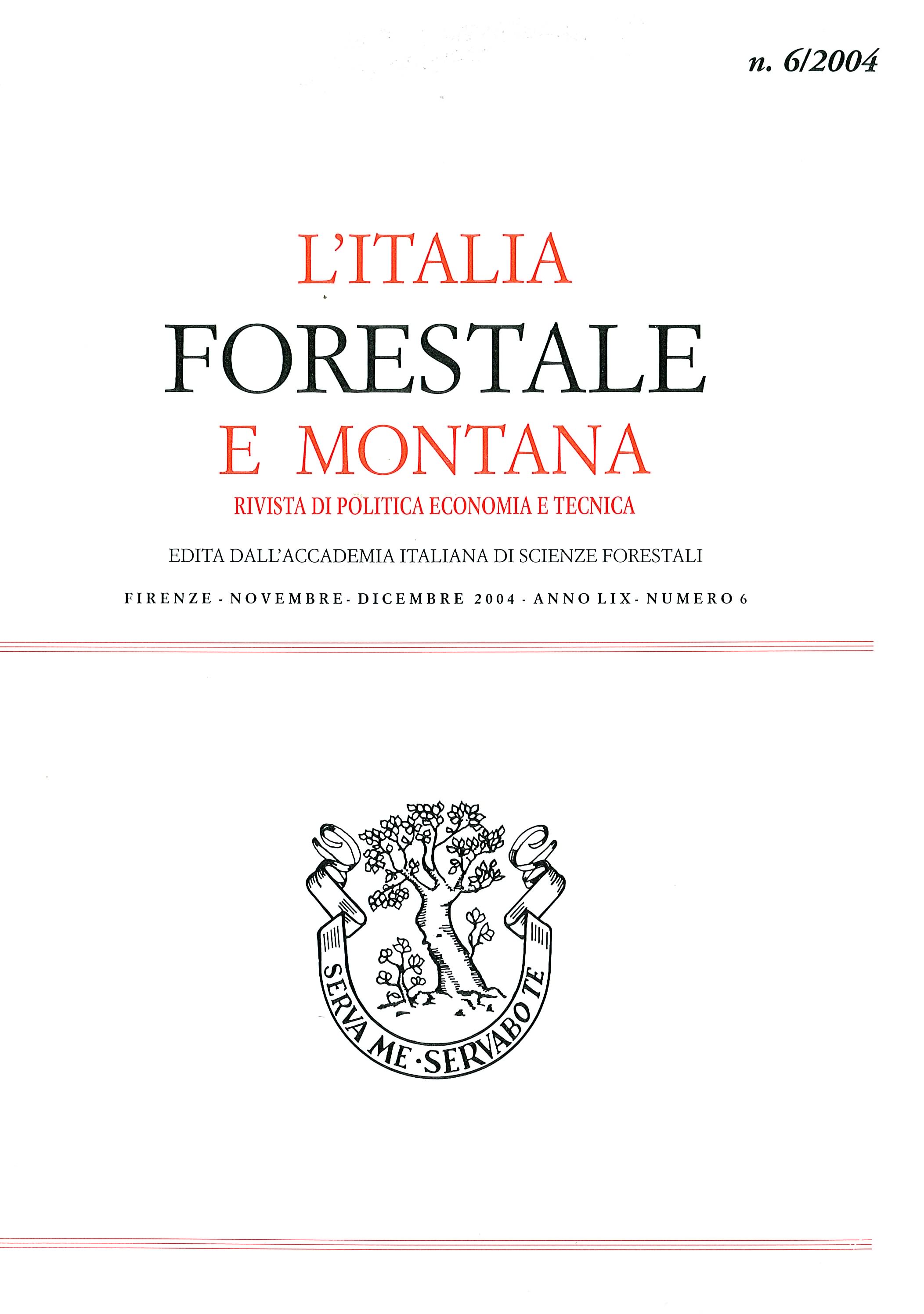Harvesting in conversion to high forest and in coppice: units and losses of fuel wood
Published 2004-12-30
Keywords
- mechanized forest operations ,
- harvesting in conversion to high forest,
- coppices
Copyright (c) 2013 Italian Journal of Forest and Mountain Environments

This work is licensed under a Creative Commons Attribution-NonCommercial 4.0 International License.
Abstract
During forest operations, outputs are mostly influenced by tree and log size. From an economic point of view, increased labour costs in the last decades caused an increase of the minimum log diameter that can be harvested. As a consequence outputs improved and wood volume totally harvested decreased. The authors describe a work carried out in order to quantify the relationship between log diameter and the woody volume released in forest. The forest investigated, belonging to Tuscany Region, is a 34-yr-old coppice dominated by Quercus cerris. Eleven plots of 2,500 m2 each were selected: seven plots differed in the number of standards; four plots differed in the intensity of tree cutting. In each plot, a wood sample of about 8 mst (stere) was analysed to determine: stacked volume; number and size of each log; total weight, geometric and real volume; stacked coefficient; weight/volume ratio. On the basis of collected data about logging systems, work times, total harvested volume, and costs, the main conclusions can be drawn as follows:
– the lower the log size, the higher the amount of small-size logs that can be harvested;
– the lower the tree size, the higher the number and volume of small-size logs;
– with total daily outputs of 2.5 to 4 mst per worker in coppice or of 2 to 2.5 mst per worker in conversion to high forest, the thresholds for economic advantage started when logs were 5 or 6 cm in diameter, respectively;
– these thresholds led to a loss in volume of harvested fuel wood of 3% and 18%, respectively, in coppice and in conversion to high forest.
In order to gain economic advantages, we would suggest:
– longer rotations would allow trees to reach higher diameters;
– cutting of trees with chest diameter higher than 11 cm would allow to compensate the costs;
– to organize the work so as to reduce the costs and to increase the productivity.

